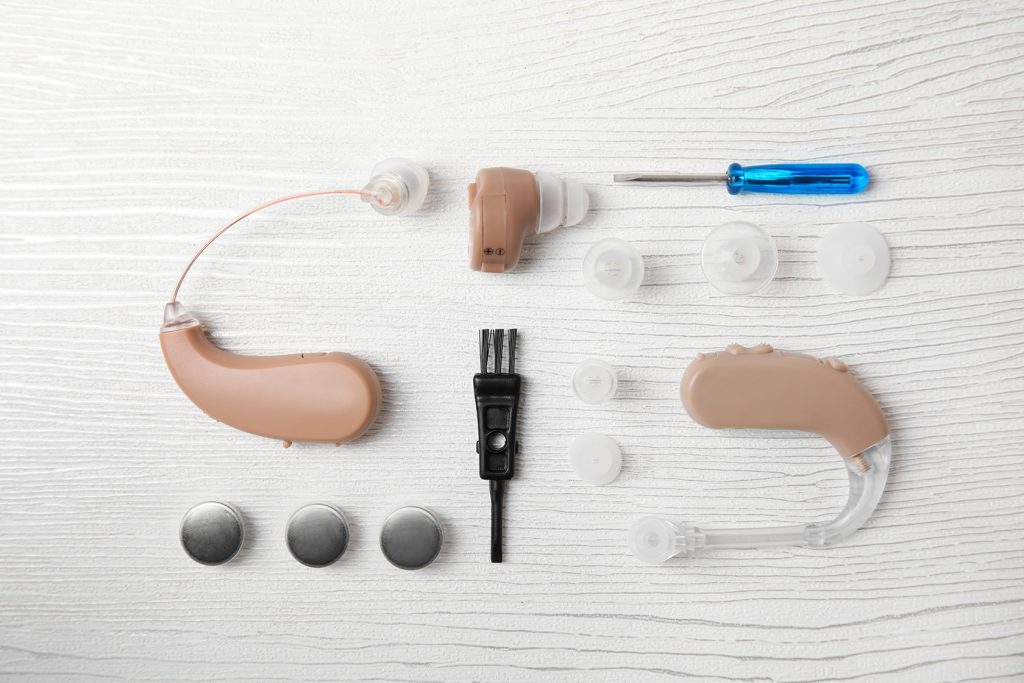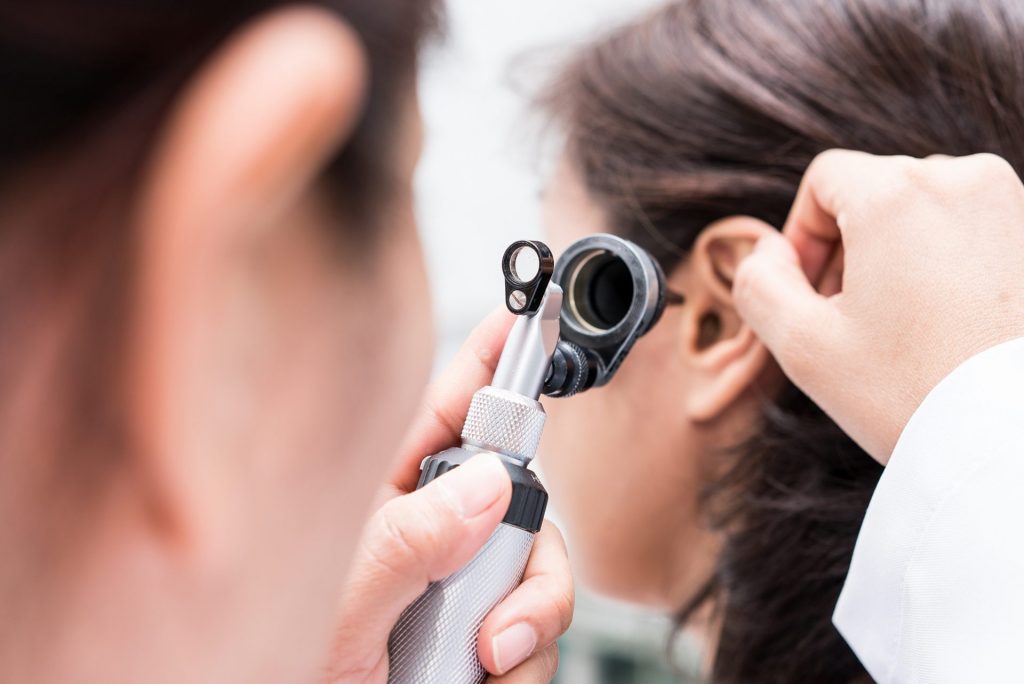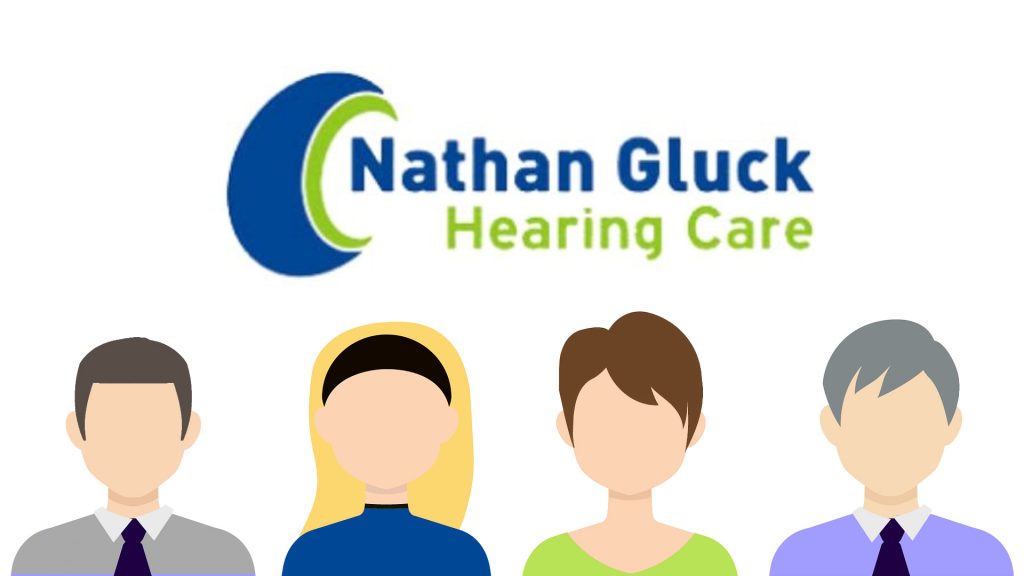The most common forms of hearing loss explained
Throughout our lives it is highly likely that many of us will lose at least some of our hearing, with 1 in 6 adults suffering from some form of lasting hearing damage in the UK. These roughly 12 million people will of course have suffered hearing loss in different forms, and as with all other medical conditions these forms can be hard to understand.

Throughout our lives it is highly likely that many of us will lose at least some of our hearing, with 1 in 6 adults suffering from some form of lasting hearing damage in the UK. These roughly 12 million people will of course have suffered hearing loss in different forms, and as with all other medical conditions these forms can be hard to understand.
To help with this we are going to take you through the most common forms of hearing loss covering their symptoms, and even some of the treatments that are available to you to combat them. Let’s get started:
Sensorineural Hearing Loss
There are 3 kinds of common hearing loss and the most prevalent amongst them is Sensorineural Hearing Loss (SHL), with 9 out of 10 hearing loss sufferers having this condition. Sensorineural hearing loss occurs when there is damage to the small hairs within your inner ear, known as stereocilia, or the nerve pathways between the inner ear and brain.
Causes of Sensorineural Hearing Loss
SHL is a permanent affliction, once developed it will be with you for life, but it is an avoidable condition at least in your younger years. There are two categories that can be used to define the causes of sensorineural hearing loss: congenital and acquired.
Congenital sensorineural hearing loss occurs during pregnancy and can be the result of a number of factors including prematurity, a lack of oxygen during birth, genetics and even some pre-existing conditions in the mother. While congenital SHL is a rough deal for the child, who will have to manage the condition throughout their lives, modern screening of all newborns in the UK will mean that the condition is diagnosed early and hearing aids or cochlear implants can be administered as soon as possible. This at least means that with the help of modern hearing aid technology the symptoms of sensorineural hearing loss can be mitigated helping the child with language development.

The second category, acquired sensorineural hearing loss, is far more common. While the congenital form is thankfully rare, there are many ways to acquire the hearing condition throughout your life. While many of these causes are avoidable, some simply come with the passage of time which is why it is important to get regular hearing tests. Two of the largest contributors to acquired SHL are aging and noise. As we get older our ears begin to naturally lose their sensitivity, as this is unavoidable it is nothing to be afraid of, especially as modern hearing aid technology can more than compensate for the loss in volume.

The second most common cause of acquired SHL is noise, and this is where your actions can work towards bettering your hearing health, or worsening it. Noise-induced hearing loss can be caused either by a single very loud event, or by repeatedly being in close proximity to sounds above 85dB. In the first instance, sounds like gunshots or explosions can be enough to cause permanent hearing damage instantly as these are often over the 140dB threshold. While you are unlikely to encounter sounds this loud within your own home, you may work in an environment that puts you at risk. To find out more about these risks be sure to speak to your elected health and safety executive, who will be able to take you through any risks in the workplace and advise you on how best to mitigate them.

The more common occurrence is being within close proximity to sounds over 85dB for extended periods of time. This noise can come from loud machinery, music and other environmental sounds. Just like with the louder noises it is important that you understand and protect yourself from these more persistent risks, and taking the proper precautions could save your hearing in the long term. As a rule, if you come away from an activity where you must shout to be heard, and are left with ringing ears, then you should be employing hearing protection throughout the activity.
Aging and noise aside acquired sensorineural hearing loss can also be caused by any of the following: disease and infections, head or acoustic trauma (either a blow to the head or exposure to a particularly loud sound), tumours and some forms of medication. While these are less common causes of SHL, you should still exercise caution around, or totally avoid them where appropriate in order to keep your hearing healthy.
How does it feel to have sensorineural hearing loss?
An important part of maintaining good hearing is knowing when something has gone a little wrong, and as sensorineural hearing loss is the most common culprit it’s important you know how to recognise it.
The most common symptoms are losing volume and clarity when trying to listen to particular sounds, and becoming far more sensitive to loud noises. This means that your quiet and normal volume sounds will become difficult to hear and understand, and louder noises will cause you more discomfort more quickly.This leads to the frustrating feeling of not being able to understand conversations, especially when there is background noise present. In age related SHL it is most common for sufferers to lose their high-frequency hearing, meaning they have trouble hearing high pitched sounds.
Treatments for sensorineural hearing loss
The easiest and most common way to treat sensorineural hearing loss is with properly fitted and tuned hearing aids, which can amplify and fill in the gaps in your hearing that your audiologist identifies. Proper fitting and setup is key, as to simply boost all sounds in the hope of it fixing the problem will just further distort what your brain hears and cause you more discomfort.

In some scenarios a cochlear implant may be the better option, but this is the less common solution and your audiologist will explore each treatment option and decide which is best for you.
Conductive Hearing Loss
Our second common form of hearing loss is Conductive Hearing Loss (CHL). Whereas sensorineural hearing loss is caused by the breakdown of how the ear transmits sounds that enter it, conductive hearing loss is caused by sounds being blocked from entering the ear altogether. Of the two, conductive hearing loss is less common but also much easier to explain and understand.
What are the causes of conductive hearing loss?
In its simplest terms conductive hearing loss is the blockage of the middle or outer ear that stops sounds from effectively reaching the inner ear and being transmitted to the brain.There is a myriad of different causes for this, including trauma, excess earwax and natural deformations in the ear.
Due to the wide range of potential factors in conductive hearing loss the effects can be temporary or permanent depending on what has caused it. In the outer ear we expect CHL to be the result of a few factors:
- Earwax build up
- Foreign objects trapped inside the ear
- Swimmer’s ear
- Physical deformities like Exostoses (bone like protrusions in the ear canal), Stenosis (a narrowing of the ear canal) or Microtia (where the ear canal is underdeveloped or undeveloped during pregnancy)
The middle ear is more technical than the outer ear, and so has a higher number of things that can potentially cause conductive hearing loss. In this region we normally see symptoms caused by these factors:
- A breach in the eardrum, usually caused by some sort of trauma
- Ear infections that cause a buildup of fluid
- Growth of tumors within the ear itself
- Damage to the small bones within the middle ear and the connections between them
The symptoms of conductive hearing loss
There are subtle differences between the sensation of having sensorineural and conductive hearing loss. Both will present with a loss in volume but only sensorineural hearing loss has an effect on clarity, and sufferers of conductive hearing loss will more than likely manage just fine by simply cranking the volume up a notch.

Obviously this is not the only way to tell the two conditions apart. Another key warning sign for conductive hearing loss is being able to hear more clearly out of one ear than the other as this is suggestive of a blockage more than internal damage caused by loud noises. You may also feel pain or the sensation of pressure in one or both ears.
How to deal with conductive hearing loss
The treatment of conductive hearing loss depends largely on the severity of your case. For many, the condition is caused simply by a buildup of excess earwax that may have become impacted in the outer ear. This, and other blockages can be easily remedied by an audiologist via earwax microsuction, wherein they will quickly and painlessly remove the offending earwax. In these cases conductive hearing loss is strictly temporary, and the procedure will likely leave you with an instant improvement in your hearing.

Where the hearing loss is caused by a more permanent blockage like an abnormal growth there are surgical options available to fix it, but many people will instead choose to employ a hearing aid to help sound get down into the inner ear. This is a perfectly viable solution to the condition, and avoids any risks that come with surgical procedures.
Mixed Hearing Loss
Mixed hearing loss is very common amongst those with other hearing conditions, and is the simplest for us to explain. This is the term used for when someone already suffering with one hearing condition is affected by another at the same time. This mix of sensorineural and conductive hearing loss is often temporary, for example an older person suffering with age related hearing loss being simultaneously affected by impacted earwax. In this scenario the earwax can be easily removed, returning the overall condition back to being strictly sensorineural.
The causes and symptoms of mixed hearing loss depend entirely on the conditions that come together to make it, and the treatments similarly are matched to the specific ailments of the patient. Rest assured however your audiologist will have an excellent bearing on all of these conditions and will be able to prescribe you with the ideal solution to combat them all.
Auditory Processing Disorder
So far we have discussed the three common types of hearing loss discussed by most people, but there is actually a fourth condition: Auditory Processing Disorder. The reason this is often overlooked is that APD is not an ailment of the ears, but of the brain. This not only adds a level of frustration to the condition, but also makes correctly identifying it particularly difficult. This is due to the fact that the patient will not be able to hear correctly, but can have a pair of perfectly functioning ears on either side of their head.

In truth it is common for sufferers of APD to also have some signs of the hearing loss conditions mentioned above, which adds another layer of camouflage to the disorder and makes its diagnosis even trickier. Because of this, a speech-language pathologist and audiologist will often work together to form a diagnosis, and each rule out any underlying conditions to arrive at the conclusion of an APD.
As auditory processing disorders consist of the brain struggling to understand and process sounds the symptoms of it can masquerade as simply not getting the sound correctly through the ears, but there are some key giveaways that stand an APD out from the pack.
Alongside the “usual” symptoms of hearing loss APD sufferers will also have trouble with how they understand the sounds they hear. This isn’t to say they forget how to speak English, but their brain has trouble understanding it correctly. This can manifest itself as difficulty remembering instructions, mishearing words or phrases (e.g “send reinforcements we’re going to advance” being heard as “send 3 and 4 pence we’re going to a dance”), difficulty understanding the nuance of language, and even sensory overload, where the sounds just become too much for the brain resulting in pain or discomfort for the sufferer.

While the causes of APD are not known, there are risk factors that tend to show if someone is more likely to develop an APD. These include already having other hearing loss conditions, complications at birth, and frequently suffering from chronic ear infections and meningitis in childhood. While there is no defence from developing an APD, the sooner it is diagnosed the sooner it will be treated.
Treating APD largely consists of speech therapy and extra training on memory and problem solving skills, alongside some specialist devices that help to filter out any distracting background noises. These measures help the patient to compensate for the effects of their APD, and live a normal life despite it.
Who can you talk to?
If you are suffering from any of the conditions we’ve talked about today, would like some more information on them or would like to book a consultation then you can get in touch with Nathan Gluck Hearing care today.
Our team of expert audiologists have over 25 years of experience in dealing with all kinds of hearing loss and we can instruct you on how best to manage your condition.
Contact us by clicking here or calling 0800 781 0422.


